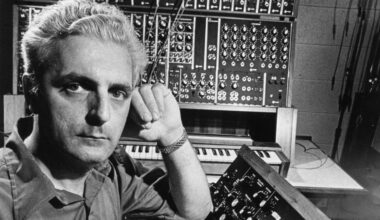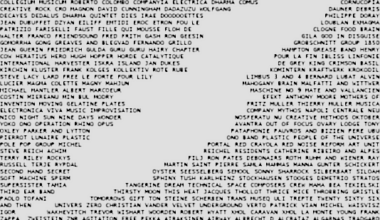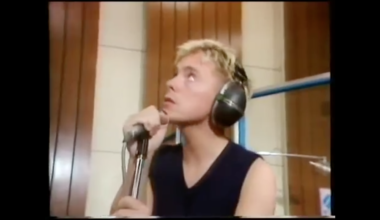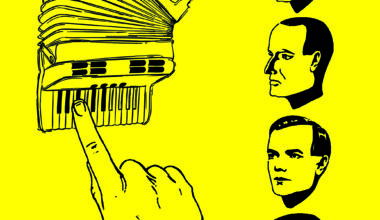It’s June 1973 and Tristram Cary is about to debut ‘Divertimento’, a work that was commissioned by Olivetti and composed on a collection of their electronic typewriters and photocopiers
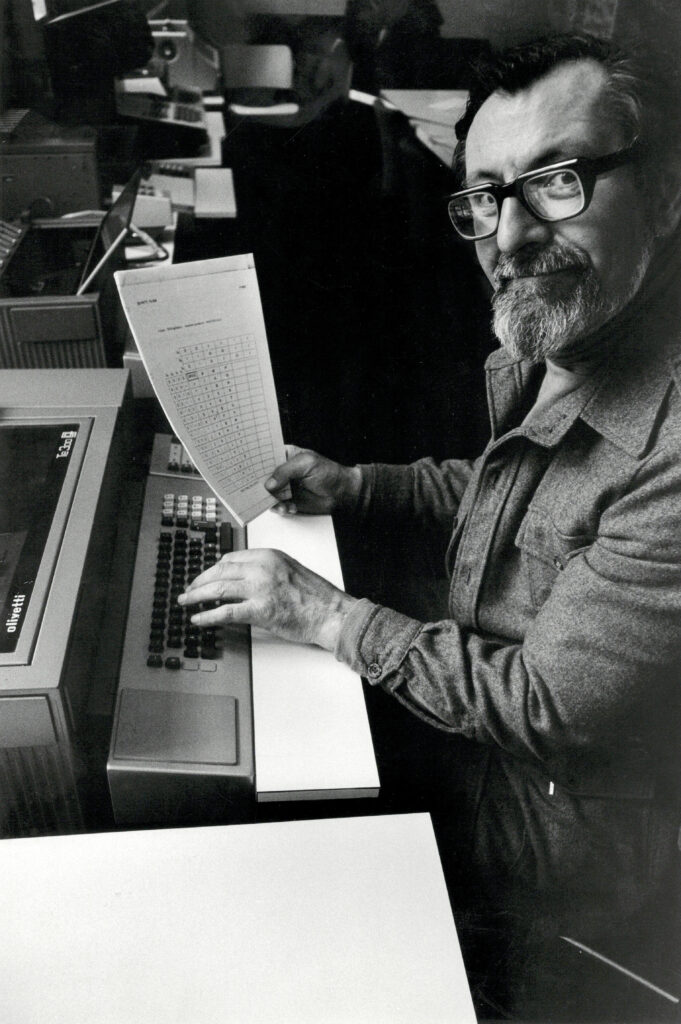
One day in the early 70s, invitations to a concert were sent out to what was then considered the great and good of British high society and the classical music scene. Recipients included the Earl and Countess of Harewood, MP Sir Geoffrey Howe, Yehudi Menuhin and more entitled nobs than you’d find on the B&Q website. These minor royals, aristocracy and captains of industry gathered at Waterloo Station on 21 June 1973 to be whisked to Haslemere in Surrey and the HQ of the Italian manufacturer of office machinery Olivetti.
On the journey, with the pre-privatised efficiency of a special chartered train, the guests were plied with champagne by red-coated British Rail employees, and when they arrived the refreshments continued to flow courtesy of Harry’s Bar in Venice (est. 1931, still going strong). The Bellini cocktails and fancy sarnies (egg and anchovy, anyone?) went down particularly well.
The event itself was a performance of a new piece by Britain’s most eminent composer of electronic music, Tristram Cary. ‘Divertimento’ was commissioned by Olivetti to help show off their new HQ, designed by star architect James Stirling. At the time, Olivetti occupied a place in the world not dissimilar to Apple. Their products were ubiquitous in offices around the world, and they took pride in the design of the machines themselves and in their buildings.
They’d commissioned Le Corbusier to design their Centre Du Calculs Electronique building in Rho, Italy, in 1963 (which was never built), and in the 1970s James Stirling was perhaps the world’s most talked about architect. Having such big names designing their buildings sent a powerful message of modernity and wealth to potential clients. It was similar thinking, about being seen to be at the cutting edge of technology, that led Olivetti to commission Tristram Cary to compose the music for the inauguration of the Haslemere HQ.
When people mention the influence the BBC TV show ‘Doctor Who’ had on the development of electronic music in the UK, they usually cite the Radiophonic Workshop and, in particular, Delia Derbyshire. Her ground-breaking work on Ron Grainer’s theme music was certainly a pivotal moment in electronic music history, which tends to overshadow Tristram Cary’s electronic scores for several early episodes of ‘Doctor Who’, including the first sighting of the Daleks.
Cary was truly one of the very earliest British electronic music pioneers, starting to incorporate oscillators and other war surplus gizmos into his compositions in the mid-1950s, and creating the score to the likes of the terrifying ’Quatermass And The Pit’ and the Ealing comedy ‘The Ladykillers’, which used traditional orchestration.
The Olivetti commission, ‘Divertimento’, was written for a choir (The Ambrosian Singers performed on the night) and used sounds from a collection of Olivetti’s latest machines; the Editor 5 proportional spacing typewriter, the Editor S-14 automatic typing system, the Copia 305 roll and sheet fed electrostatic copier, the Summa Prima 20 manual add/listing machine and half a dozen other bits of office gear.
If all that sounds like the arcane kit list from the back of an imaginary lost Kraftwerk album from the Conny Plank years, consider that Cary’s piece was intending to “make a fresh statement about relationships between people and machines”. When Kraftwerk were still years away from their own pondering on that very subject, Cary was bringing together the human voice and the tones, textures and rhythms made by actual machines, not synthesised emulations.
“Against the warmest and most unmachine-like of musical instruments – the human voice – I have set the sounds of computers and other figuring machines,” Cary said in the programme notes. “Repetitious and mechanical in the raw state, machine sounds acquire a new kind of beauty when processed in the electronic music studio. Some are transformed into melodic and harmonic sounds – perhaps the starting point of a choral development; and sometimes, the voices are made machine-like.”
The electronic music studio he refers to is EMS in Putney, where he, Peter Zinovieff and David Cockerell created synthesisers like the EMS VCS 3 and the massive Synthi 100. Not long after the Olivetti commission, Cary left EMS and upped sticks altogether, emigrating to Australia, becoming a lecturer at the University of Adelaide and building an electronic music studio there centred around his own Synthi 100.
Tristram Cary died in 2008, aged 82, and his Synthi 100 now belongs to Jack Dangers and is fully operational in his studio in San Francisco. ‘Divertimento’ is available on the album ‘It’s Time For Tristram Cary’, which was released on Trunk Records in 2010.
